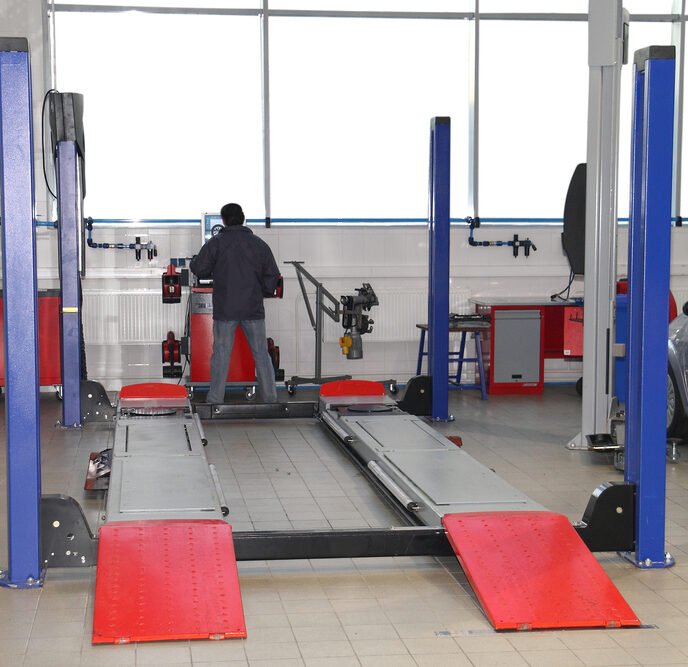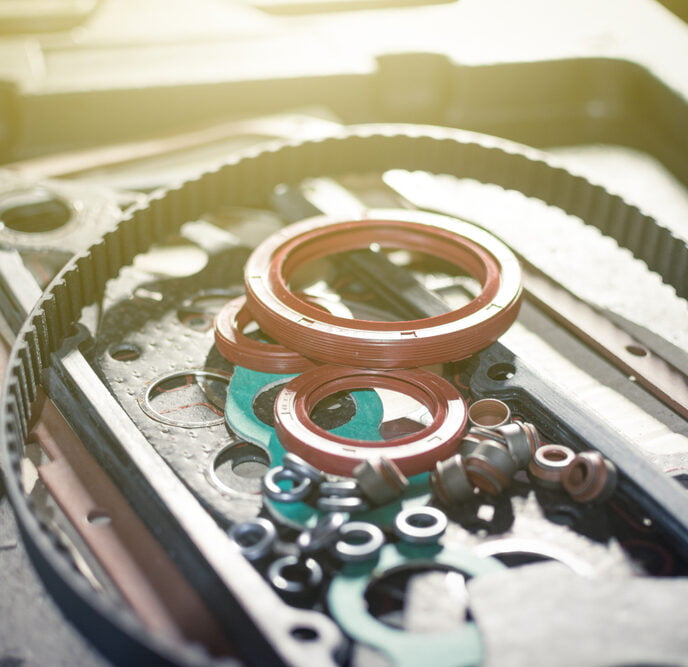Scissor Lift Mechanism Explained: How Does a Scissor Lift Work?
Scissor lifts commonly apply to a variety of tasks from performing building repairs to reaching materials stored in corporate warehouses.
Though it may be easy to assume a scissor lift’s general capabilities, you might be wondering what contributes to the successful operation of a scissor lift. In the content below, we explore how scissor lifts work effectively and which industries greatly benefit from their applications.
What Are Scissor Lifts?
The name behind the scissor lift derives from the crisscross X-pattern formed from its collapsible, supporting beams. Together, the hinged beams under the work platform make the assembly look like several sets of connected scissor blades as they move up and down.
A scissor lift includes five crucial parts: the platform, base, scissor legs, hydraulic/pneumatic cylinder, and motor or alternative power source.
1. The Platform
The platform is the uppermost part of the lift, where a person or an object is positioned, to reach a desired elevation. Platforms intended to transport people include rails, whereas platforms without rails typically only transport materials. A platform comes in a variety of shapes, sizes, and weight capacities, allowing you to select a model according to your lifting needs.
2. The Base
The bottom, or base, of the scissor lift consists of strong rigid brackets. Serving as the most essential component of the unit, the engineered purpose of the base is to guide the rollers at the bottom of the scissor legs. Additionally, the base supplies the necessary stability to hold everything in place and ensure safe operation.
The base of a scissor lift depends on its intended use as some models have mobile trucks or carts for transport. However, some scissor lifts perform while stationary. Complex scissor lifts capable of elevating their platform to greater heights need strong bases to ensure they remain in place as the upper components move. Some may require fastening to a heavy, reliable platform; others are screwed to the ground.
3. Scissor Legs
The vertical scissor legs bridge the gap between the base and platform and are what allow the lift to raise to a designated elevation. The X-shaped composition of the scissor legs allow the lift to return to a compact size when not in use.
4. Hydraulic Cylinders
Without the use of hydraulic cylinders, the operation of scissor legs is impossible. Responsible for raising and lowering the scissor lift, hydraulic cylinders actuate via high pressure. Typically, a scissor lift will have between one and four cylinders attached to it. The cylinder’s contents depend on the type of scissor lift. For example, a hydraulic scissor lift has a cylinder filled with hydraulic fluid, while a pneumatic cylinder pump is filled with compressed air.
5. The Power Supply
The motor, or power supply, is a paramount component, operating both the hydraulic cylinders and the overall movement of scissor lifts. The power supply typically derives from diesel, gas, or electrical motors. Alternatively, scissor lifts may operate pneumatically with the use of a high industrial compressor.
How Does a Scissor Lift Work?
Given that scissor lifts only operate in a vertical fashion, the up and down movements typically originate from hydraulic, pneumatic, or mechanical systems. The power supply provides the necessary power to activate the hydraulic or pneumatic pump, which in turn pushes out or pulls in a mechanical component in the hydraulic/pneumatic cylinder. As a result, the push and pull movements cause the scissor legs to move and propel the platform up or down.
How Do Operators Safely Use Scissor Lifts?
Operating a machine while suspended in the air automatically creates safety risks. To ensure the safe operation of scissor lifts, here are four precautionary steps to take.
Complete Scheduled Maintenance
A scissor lift operates to its fullest potential when regular repairs and maintenance are performed. To prevent any damages or excessive wear-and-tear to the scissor lift, stay on track with regular maintenance inspections.
Conduct Training for Crew Members
Before using a scissor lift, confirm that each crew member who operates the equipment is familiar with its use. As a precautionary act, hold a training meeting with your staff and demonstrate safety protocols and procedures of the scissor lift.
Clear the Surrounding Area
It’s imperative to create a wide and unobstructed path for the scissor lift to maneuver through. Removing any potential safety hazards such as electrical cords and sharp objects from the scissor lift’s path helps prevent any risk of damage to both the lift and nearby employees.
Perform a Pre-Operation Safety Check
Before stepping foot on the scissor lift, inspect the entire lift. Confirm that everything works properly, including the brakes and emergency stop button.
What Are Some Scissor Lift Applications?
Manufacturing engineers are always redesigning the scissor lift for various uses. Below, we provide two common avenues in which your shop or business can implement a scissor lift.
Automotive Industry – Above Ground Scissor Lifts
Scissor lifts serve as reliable and efficient auto lifts. For the automotive industry, stationary, above ground scissor lifts offer a great value by resembling the functions of two-post auto lifts.
Warehousing Applications
Scissor lifts serve as reliable equipment for many warehouse needs. For smaller projects, scissor lifts prove efficient in the following applications:
- Lifting and transporting large quantities of heavy products such as boxes, pallets, and sheet metal with ease
- Raising a forklift to perform maintenance on the underside
- Weighing platforms to weigh heavy machinery and equipment
- Extending a work area when renovating or remodeling a deck
- Providing a safer alternative for reaching higher areas of a building as opposed to a ladder
Secure, Reliable Lift Replacement Parts with SVI International
At SVI International, we are the industry’s leading supplier of repair parts for all types of automotive lifts. Besides traditional, every-day parts, SVI is known in the industry as the problem solver – tackling specialty lift concerns with innovative products. Our supply of high-quality products can play a significant role in protecting your auto lift investment.
We’re just a phone call away. If you have questions, concerns, or need help placing an order, please reach out at (800) 321-8173 or via our online contact form.


